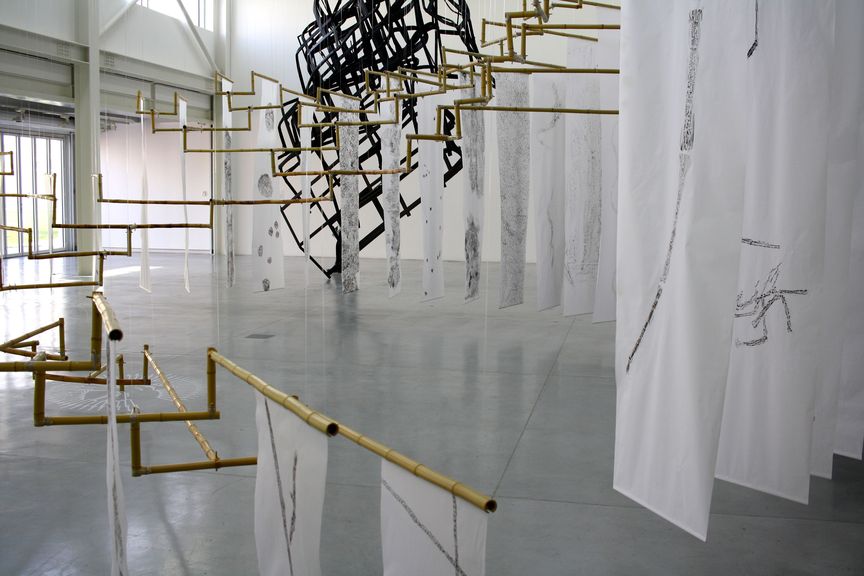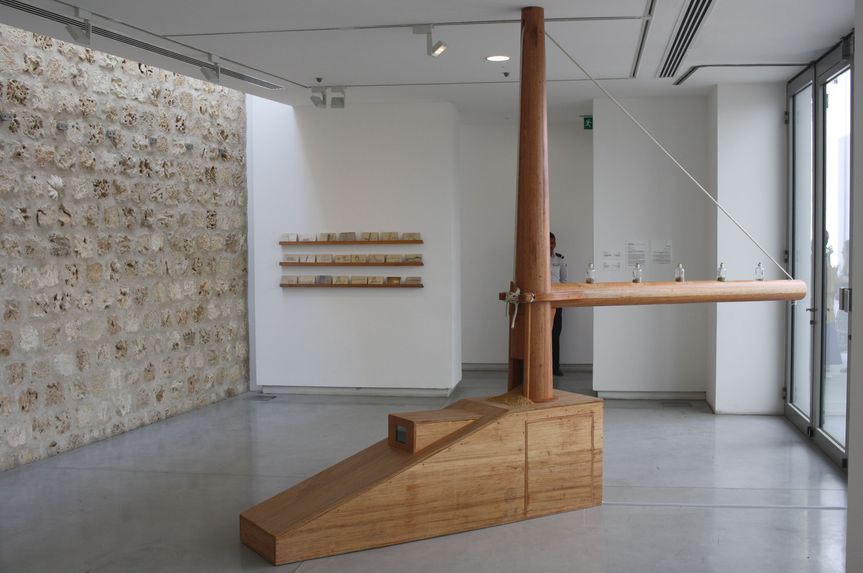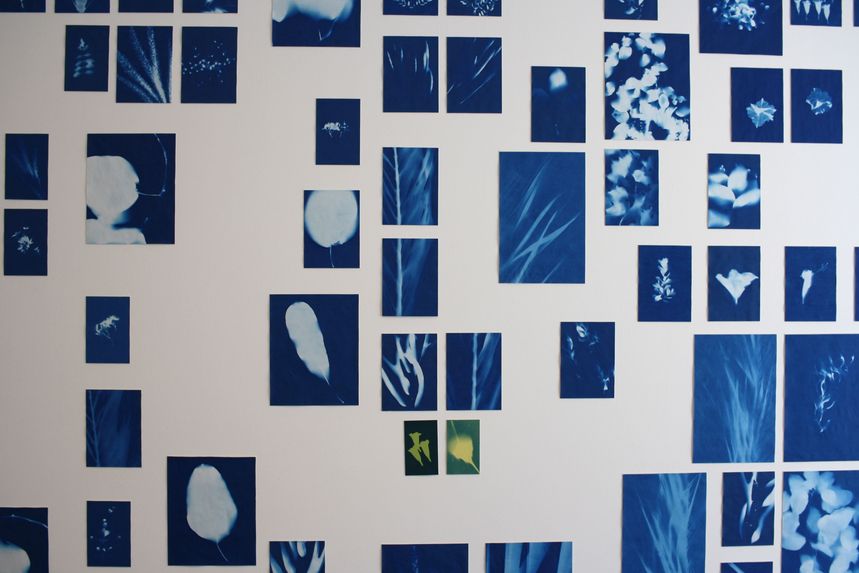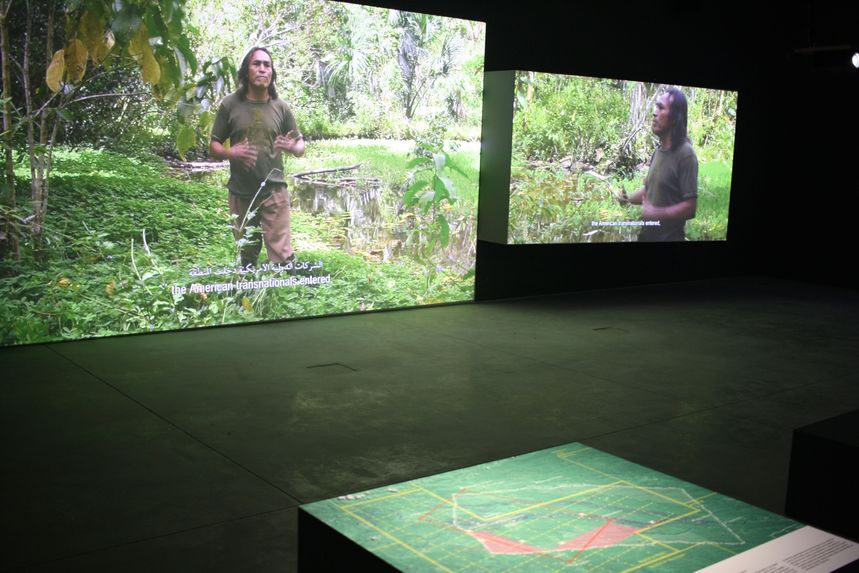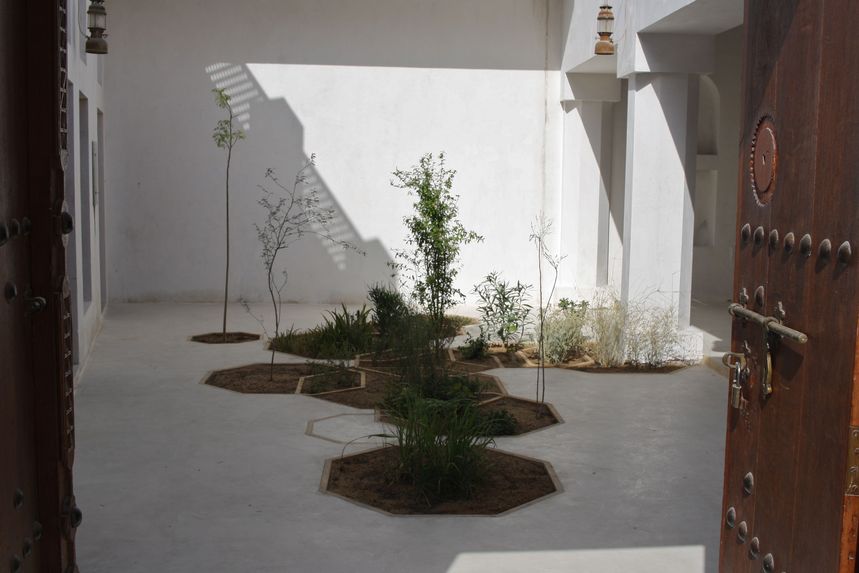So while ecology was very much a prime topic for artists in the Biennial, the responsibility to address climate change—that is, the human component of the erasure of indigenous peoples, lands, species, as raised by the Turkish journalist—was curiously absent. Of course, the background context of environmental degradation is the human lifestyle, resource extraction, fossil-fuel consumption, and the systems of global capitalism that necessitate and enable all this. But it was notable, and I think regrettable, that as an exhibition, the Biennial doesn’t make a link between the struggles of the planet and the politics of climate change itself—because there is a real and ongoing intra-human conversation happening about what to do about it and who is responsible for resolving all the paradoxes of modern development. Something like Bruno Latour’s re-enactment, or simulation, of the Paris climate change conference, COP21, just for example, could have been a bridge between the ecological and political. Or some work that references the human suffering already caused by climate change or environmental degradation. Because, no offense to Futurefarmers, but sailing in a wooden ship, sending radio telegrams to anthropologist Michael Taussig in Brooklyn, and handing off precious little pouches of seeds to friends is not going to inspire anyone to reform the global agriculture business that has wiped out local varieties of plants and devastated farming communities around the world—topics that were much more beautifully and substantially dealt with by Amar Kanwar in his project, “Sovereign Forest” (2011– ) about farmers in India and their struggles against the agro-business. It’s just dilettantism, a romantic artists’ posture in the face of the realities that 99 percent of the world has to live in. Artists should either engage in self-critical thinking about how to bring new approaches to crucial topics, or just go off and enjoy sailing a wooden boat.
What Kader Attia spoke about the second day, of “enacting a field of emotion,” was what many of the ecological-themed works still failed to do. Allora & Calzadilla’s video has physical and sonic presence: its imagery is strong and it has a humorous but tragic narrative, told from the point of view of the parrots. Attia’s own piece in the Biennial, Mimesis as Resistance (2013), is a short video of a lyrebird presented as a kind of nature-documentary in which a narrator is describing how the bird imitates the “sounds of the forest,” including the chain-saw and car alarm. Even if you’ve seen this video before, it gives you a double-take—is the bird actually making these sounds? And, if so, or even if not, how poignantly comical and stark is this, as a testimony to the extent that humans have imprinted themselves on the natural world. It’s a simple video with an intriguing paradox (real or not real? real but un-real? real but all too real?) and once you’ve seen it you can’t un-see it.
HG Masters is editor-at-large of ArtAsiaPacific.
To read more of ArtAsiaPacific’s articles, visit our Digital Library.
